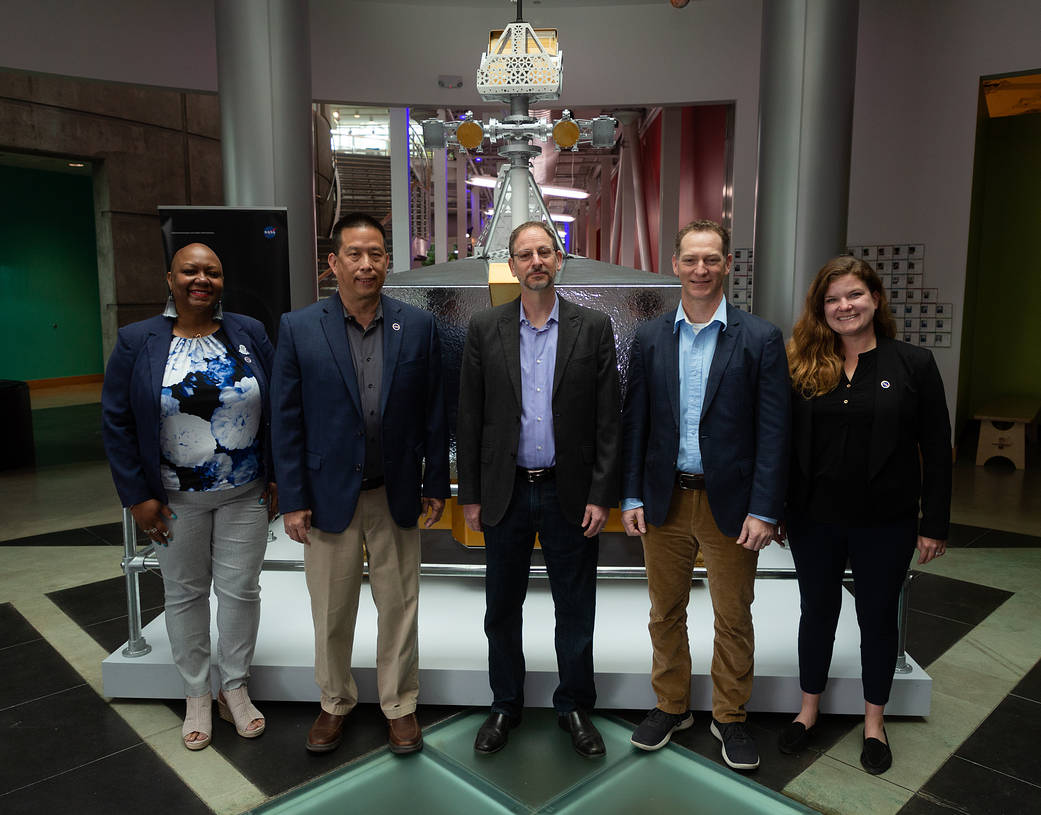The first full-scale replica of the agency’s Volatiles Investigating Polar Exploration Rover (VIPER) at the Chabot Space and Science Center in Oakland, California, on May 28. As part of the Artemis missions, VIPER will land at the lunar South Pole to map and explore the region looking for water and other resources, in late 2023. Roughly the same size as a golf cart, the life-size model is nearly identical – though only one-third the weight – to the real Moon rover that will embark on a 100-day mission on the lunar surface. Technicians in the Manufacturing Division at Ames designed, built, and assembled the lunar rover model, which made its debut at NASA’s Artemis Preview Weekend at Chabot.
The model’s debut was part of the NASA Artemis Preview Weekend hosted by NASA’s Ames Research Center in Silicon Valley. The event featured exhibits, hands-on activities, and Ames employees who have contributed to the Artemis lunar missions, including (from left to right) Dr. Joeletta Patrick, director of NASA’s California Office of STEM Engagement, Eugene Tu, Ames Center Director, Adam Tobin, Chabot Director, Ryan Vaughan, VIPER lead mission systems engineer, and Cara Dodge, Ames Event Lead, shown standing in front of the first life-size VIPER model.
The VIPER mission is managed by Ames and is scheduled to be delivered to the Moon by Astrobotic’s Griffin lander as part of the Commercial Lunar Payload Services initiative. Construction of the rover will begin in late 2022 at NASA’s Johnson Space Center in Houston, while the rover flight software and navigation system design will take place at Ames. Astrobotic will receive the complete rover with its scientific instruments in mid-2023 in preparation for launch later that year.





























